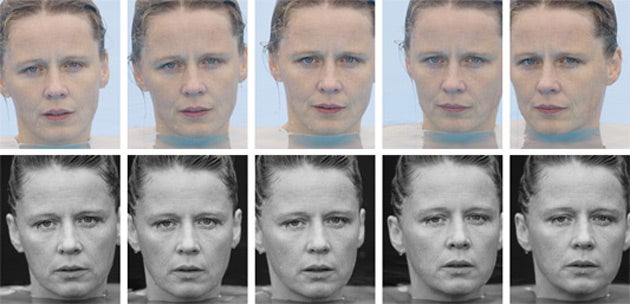Roni Horn: Recent Work, Hauser & Wirth, London

Your support helps us to tell the story
From reproductive rights to climate change to Big Tech, The Independent is on the ground when the story is developing. Whether it's investigating the financials of Elon Musk's pro-Trump PAC or producing our latest documentary, 'The A Word', which shines a light on the American women fighting for reproductive rights, we know how important it is to parse out the facts from the messaging.
At such a critical moment in US history, we need reporters on the ground. Your donation allows us to keep sending journalists to speak to both sides of the story.
The Independent is trusted by Americans across the entire political spectrum. And unlike many other quality news outlets, we choose not to lock Americans out of our reporting and analysis with paywalls. We believe quality journalism should be available to everyone, paid for by those who can afford it.
Your support makes all the difference.The American artist Roni Horn has said that she chose Iceland as her material in the same way a sculptor might choose marble. She has documented the country in books and photographs, focusing particularly on the changeability of its weather.
Perhaps the wetness contributes to the way in which Horn's work seems to have a natural relationship with London, too. Her 2009 exhibition at Tate Modern was one of the few exhibitions I have seen that truly took account of the gallery's location. After examining her photographs of the Thames, I could look out of the windows and see the darkly shimmering river below in a new light.
Similar themes – location, light and mutability – dominate in her first solo show in London since the Tate. In the North Gallery at Hauser & Wirth's Savile Row location are 10 coloured glass sculptures. These are low cylinders, flat, wide and basinlike, with fire-polished tops that look as though they could be a surface of water. The sides of the sculptures are matte and textured, however, containing the delicate shades of the coloured glass. These colours are heavenly in the literal sense: reminiscent of clouds, ice, rain and sky, as well as flowers, butterflies or frosted candies.
The body reacts to such sculptures in a strange way. Because from a certain angle they appear liquid, there is a desire to touch them, to plunge one's hand in and check. Visitors peer inside, trying to see the light caught in the bottom, which becomes strangely invisible when viewed from the top.
Horn drags us away from wateriness, too, with this work's title. It is called Untitled ("Once I saw Emily's comb, a very nasty-looking comb, too. She dropped it off the horsehair sofa the moment she died and it fell in the fire. Charlotte grabbed it, which seems an odd thing to have bothered about doing with her sister dying. There it is to this day, a bit burnt. One of the most horrible things I ever saw.") (2011).
This title refers to an anecdote about the death of Emily Brontë. The images of the fire, horsehair sofa, death and the burnt comb and seem antithetical to the atmosphere of Horn's sculptures, which have a cool, gentle atmosphere. It is as though they might be memory buckets, or soothing lozenges – a balm to stories of pain and fire. They are very beautiful, and worth visiting on different days, to be seen in changing climatic conditions as the cold sharpens its teeth and the days contract towards winter.
You Are the Weather, Part 2 (2010-11) is a room filled with images of the same woman in hot springs in Iceland. What one registers on the woman's face is change. The woman will be familiar to anyone who saw the 2009 Tate show, which included You Are the Weather (1994-96) – she is the woman Horn photographed hundreds of times, 15 years older. Her changing expression, combined with water and steam, creates a sea of emotions and thoughts. There is something rather melancholy about seeing the changes wrought on this woman's face. Nearly every expression appears more measured – more thoughtful, more intelligent, yet less strong. This is a far greater measure of age and change than a couple of lines.
To 22 October (020 7287 2300)
Join our commenting forum
Join thought-provoking conversations, follow other Independent readers and see their replies
Comments